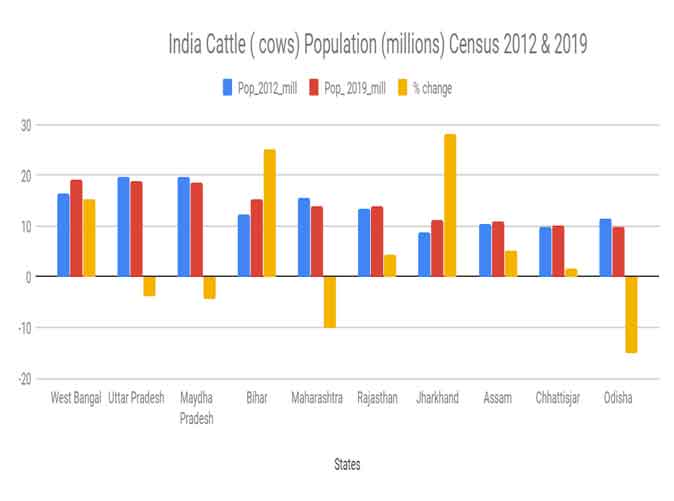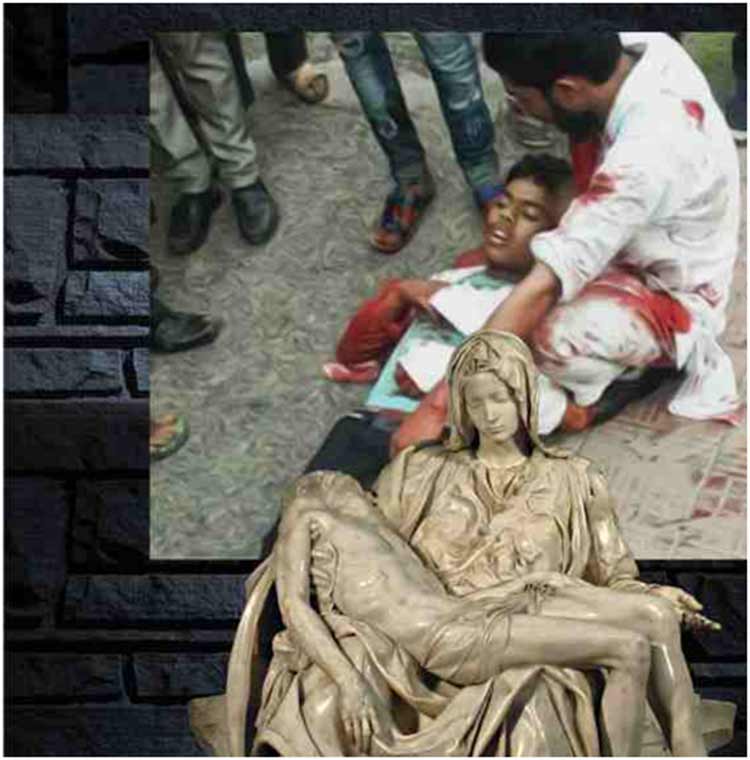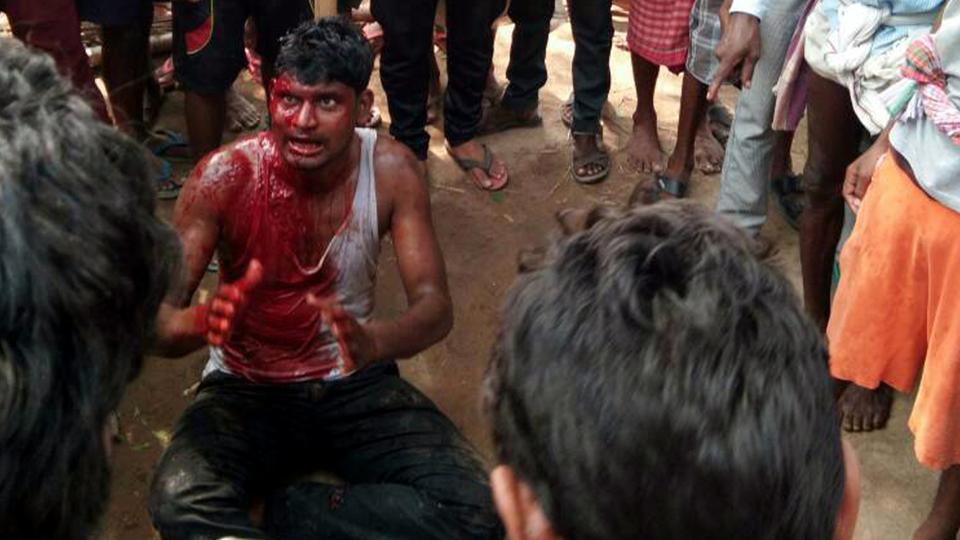
Source: India Ministry of Livestock,2019
Sources: Live Mint, a web portal news service,2019.
Since the Hindu nationalist Bharatiya Janata Party (BJP) under the leadership of current Prime Minister Narendra Modi won the national election in 2014, India has seen an outbreak of religious hate crimes against Muslims, lower caste Hindus, and Christians. , with an average of one happening every week. In the first five years of Modi’s first government, the country witnessed 276 religious bias-driven hate crimes, according to Hate Crime Watch, a database that tracks such crimes in India. In the five years preceding Modi’s tenure, there were only 24 cases.
Most of the hate crimes are related to cow-related lynching where Hindu mobs attacked Muslims, Christians, and lower-caste Hindus known as Dalits because they suspected them of slaughtering cows. In most cases, the BJP government vaguely acknowledges the crime but never condemns the mob that attacked the people suspected of cow slaughter.
In India, cow slaughter is illegal however buffalo slaughter is legal. Article 48 of the Indian constitution prohibits the slaughter of cows, calves, and other milch ( milking ) cattle. This constitutional probation doesn’t mean that states are also prohibited to slaughter cows. A lot of states of northeast, South, and the State West Bengal have allowed the slaughter and consumption of cows and buffaloes.
Recently the Indian ministry of Animal husbandry released livestock census 2019, which provides headcount data of domesticated animals that includes cattle, goats, buffalo, sheep, horses. The census reported that cattle population stood at 192.90 million in 2019 and the highest growth in cattle ownership is witnessed in West Bengal and the northeastern state of Assam. West Bengal saw a phenomenal growth of 15.18 percent with 19 million cattle. Similarly, Assam also witnessed a steady growth of 5.29 percent with 10 million cows. These two states allow cow and buffalo slaughter and beef consumption is common among all religious groups.
On the other hand, states where cow slaughter and even eating beef is illegal or considered taboo such as Uttar Pradesh (UP)and Madhya Pradesh (MP), saw a steep decline in cattle counts. Uttar Pradesh, the largest and most populated state of the union where cow worshipping is observed passionately saw a steep decline of 3.93 percent, the cattle population stood 18.8 million. Similarly, states of Madhya Pradesh and Maharashtra, which have a violent history of killing cattle owners in suspicion of slaughtering also saw a dip in cattle counts of -4.42 and -10.07 percent respectively.
These numbers clearly indicate that farmers and poor households who own cattle in states where slaughter laws are relaxed have incentives to raise them for profit and improve their savings and disposable income. From the cattle headcounts, data in UP and MP data clearly shows that farmers are not interested in cattle farming and abandoning their unproductive cows ( can’t produce milk). News agency Voice Of America (VOA) reported in January 2019, that as the Hindu nationalist UP government imposed tough restrictions on cattle trade, the slaughterhouses have virtually shut down and the thriving trade in aged cattle that were previously sold for meat or hides has stopped. Because of the stricter implementation of the cattle trade, farmers are quietly abandoning their aged animals under the cover of darkness in neighboring villages or roads resulting in a massive spike in the number of stray cows. By one estimate more than 5 million stray cattle roam the countryside in India.
In UP state, the cattle are usually transported to other states where laws were less restrictive. But that movement has virtually stopped as mobs of aggressive cow vigilantes supported by BJP party cadre patrol highways and stop trucks that they suspect of transporting cows. The vigilantes have been blamed for several violent attacks on Muslims and Dalits cattle traders.
Local economists warn that the cows pose the latest challenge to a rural economy already reeling under the pressure of low crop prices. Indian farmers have been raising cows for centuries for milk and income for trading their aged animals. Media web portal Mint India reported that economic data on Indian farm wages have witnessed a dip from 4.7 percent to 3.09 percent from 2016 -2018.
By banning cow slaughter and beef-eating India has lost an immense opportunity of earning large amounts of foreign exchange by exporting halal or kosher beef to Middle East countries.
Islamic countries of the Middle East and Israel remain heavily dependent on food and agriculture products. Halal meat is highly demanded. Some of the countries in the region enjoy high disposable incomes like the Gulf Cooperation Council bloc because of oil and gas dividends.
Cow worshipping
According to Wendy Doniger, Distinguished Service Professor of the History of Religions, University of Chicago wrote in an article that “ Scholars have known for centuries that the ancient Indians ate beef.” By the 19th century, the cow-protection movement had arisen. One of the implicit objects of this movement was the oppression of Muslims.
The recent lynching of Muslims, Christians, and lower-caste Hindus is politically motivated. It seems that whenever a citizen is lynched by the mob in the name of cow protection, the political narrative in the country shifts from economic woes to religious nationalism.
India is a complicated nation. They have a long history that saw a period of prosperity and heart-breaking poverty. The political forces in the country see history as a weapon to impose narratives that can “ bring the glory back”. Of course, in the case of BJP, it’s the Hindu glorious period where Indians enjoyed prosperity and made great strides in metallurgy and astronomy. Muslims and Christians of India understand that cow worshipping is a sensitive issue for the majority of the Hindu population. Therefore, the majority of Muslim owned eateries don’t advertise beef on their menu. It seems that there’s a harmonious relationship between different religious groups when it comes to cows but then why such hatred on cow trade and slaughter? The answers are complicated as it touches human emotions, religious dogmas, and politics.
Nadeem Kazmi is a political commentator
SIGN UP FOR COUNTERCURRENTS DAILY NEWSLETTER















































